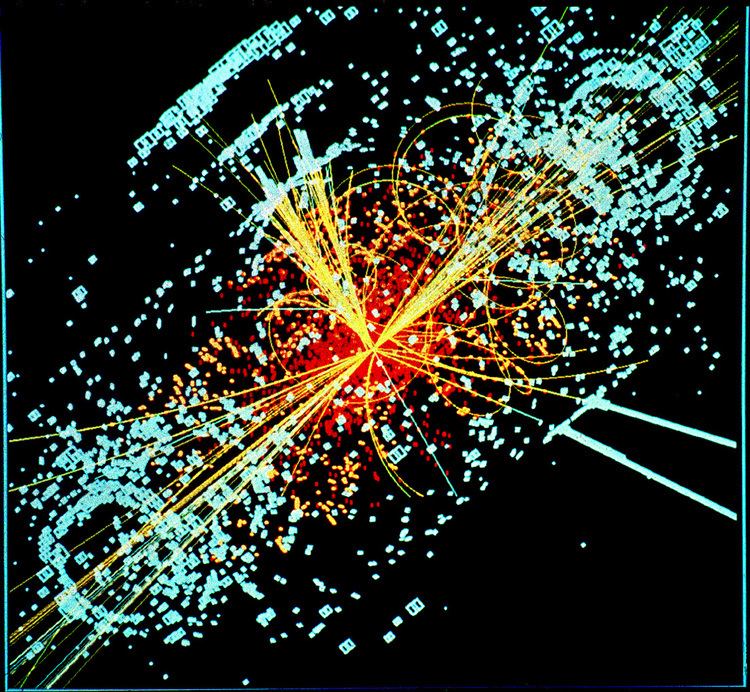 | ||
The dark photon is a hypothetical elementary particle, proposed as an electromagnetic force carrier for dark matter. Dark photons would theoretically be detectable by mixing with ordinary photons, and their subsequent effect on the interactions of known particles.
Dark photons were proposed in 2008 by Lotty Ackerman, Matthew R. Buckley, Sean M. Carroll, and Marc Kamionkowski as the force carrier of a new long-range U(1) gauge field, "dark electromagnetism", acting on dark matter. Like the ordinary photon, dark photons would be massless.
Dark photons were suggested to be a possible cause of the so-called 'g–2 anomaly' obtained by experiment E821 at Brookhaven National Laboratory, which appears to be three to four standard deviations above the Standard-Model values of Hagawara et al. and Davier et al. However, dark photons were largely ruled out as a cause of the anomaly by several experiments, including the PHENIX detector at the Relativistic Heavy Ion Collider at Brookhaven. A new experiment at Fermilab, the Muon g-2 experiment, expects to produce a precision four times better than the Brookhaven experiment.
More generally, a dark photon is any spin-1 boson associated with a new U(1) gauge field. That is, any new force of nature that arises in a theoretical extension of the Standard Model and generally behaves like electromagnetism. Unlike ordinary photons, these models often feature a dark photon that is unstable or possesses non-zero mass, rapidly decaying into other particles such as electron-positron pairs. They may also interact directly with the known particles, like electrons or muons, if said particles are charged under the new force.
